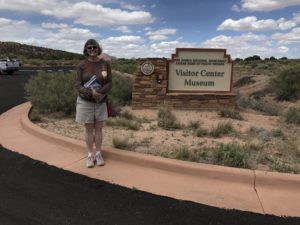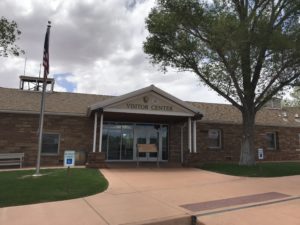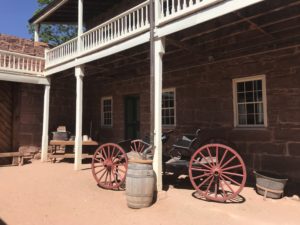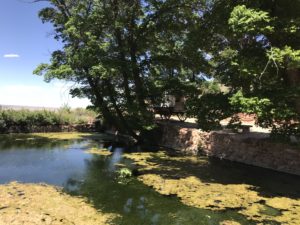 This summer Tom and I are working at Pipe Spring National Monument in northern Arizona. We started May 14 but it took me a while to get caught up with my posts about Ohio. We trained for the
This summer Tom and I are working at Pipe Spring National Monument in northern Arizona. We started May 14 but it took me a while to get caught up with my posts about Ohio. We trained for the
first two weeks, learning about the monument and how it runs.
Pipe Spring is the only year-round water source for quite a distance in this part of Arizona. Because of this, the spring is very valuable to the people in the area and always has been. The ancestral Puebloan people used the spring over 1,000 years ago. Their descendants, the Kaibab Paiutes, also used the spring. Because they were hunter-gatherers, they used the spring as a seasonal but constant source of water.

In the 1850’s and 1860’s, pioneers came to the area. These pioneers were sent out as caretakers of cattle herds owned by the Church of Jesus Christ of Latter Day Saints (LDS). When the Navajo in the area raided the cattle and killed some of the settlers, the LDS decided to build a fortified home. They built this home on top of Pipe Spring, cutting off native access to the spring. Here at Pipe Spring National Monument, we tell the story of the LDS pioneers and their interaction with the Kaibab Paiute.
Pipe Spring National Monument was created in 1923 when the National Park Service needed a half-way point between Zion and Grand Canyon National Parks. Pipe Spring was a rest stop for guests visiting the big parks as they traveled back and forth. Today, most of our visitors are still heading to one or the other of the big parks close by.
Pipe Spring has a large staff for its size. This summer there are more than 25 employees between full-time staff, seasonal rangers, interns, and Youth Conservation Corps. Tom and I are the only volunteers. But two other staff members live here at the campground with us, and eight staff members live on the grounds of the monument. There are always plenty of people around.
During the summer Tom and I will be working in the Visitors Center, giving tours of the fort, and giving Living History demonstrations. You will hear lots more details about each of these areas as we get into our work schedule. The learning curve has been pretty steep these first few weeks, but we are learning what we need to know in order to be good employees of Pipe Spring National Monument.


